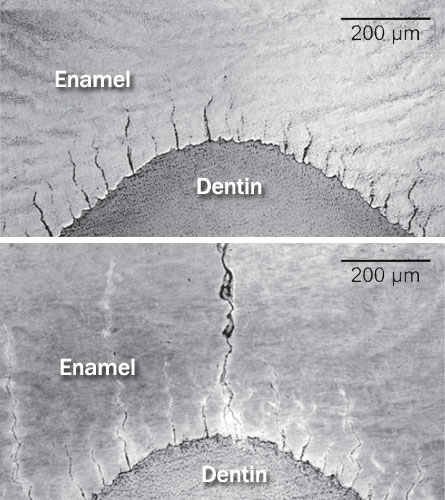- More than 2 years ago
Mammalian tooth enamel is as brittle as glass, yet the teeth can withstand the force required to hold a 220-pound barbell steady. Now a team of materials scientists and anthropologists reports how the structure of tooth enamel gives teeth the strength to bear a lifetime of chewing.


Led by Brian Lawn of the National Institute of Standards and Technology in Gaithersburg, Md., the researchers applied force to and imaged teeth to get at how the tooth enamel of human and sea otter molars behaves under duress.
Enamel is made up of rodlike structures interwoven in a basket weave–style, sealed with a protein-based glue. Where enamel meets dentin, the material that makes up the bulk of the tooth, small cracks known as tufts develop in the enamel, pointing from the inside outward. When serious force is applied to the tooth, the length of several tufts may extend, the team now reports online April 13 in Proceedings of the National Academy of Sciences.
So rather than shattering in one long crack, a tooth distributes force among many small cracks. Tufts make a tooth tough by bearing the weight together, resulting in enamel that behaves more like concrete than glass, Lawn says.
Tufts arise naturally during enamel development, Lawn says, but scientists never considered that these cracks could shield a fully-formed tooth from fracture. “It’s easy to make a crack start, it’s not easy to prevent it from growing to failure,” he says.







